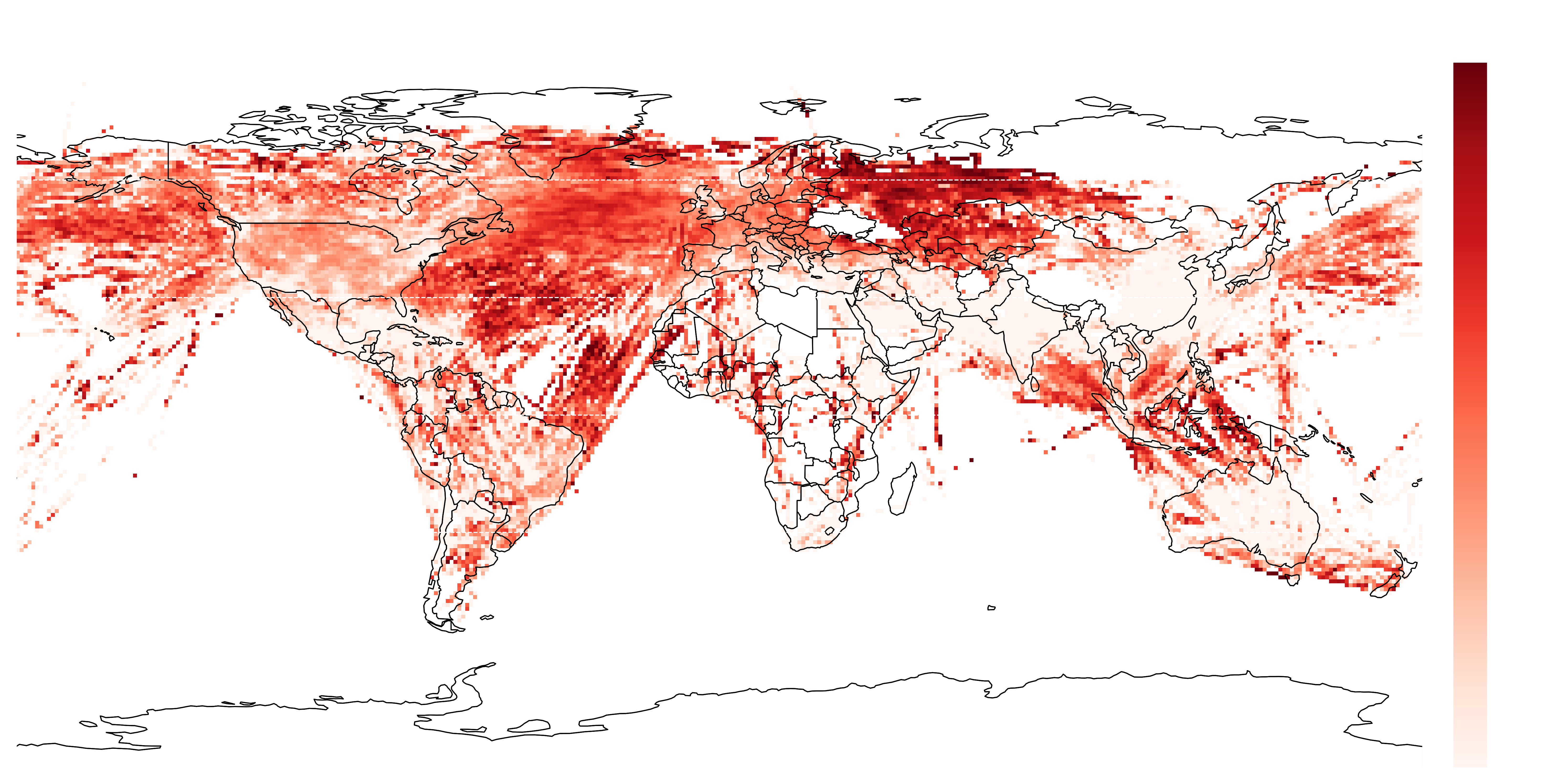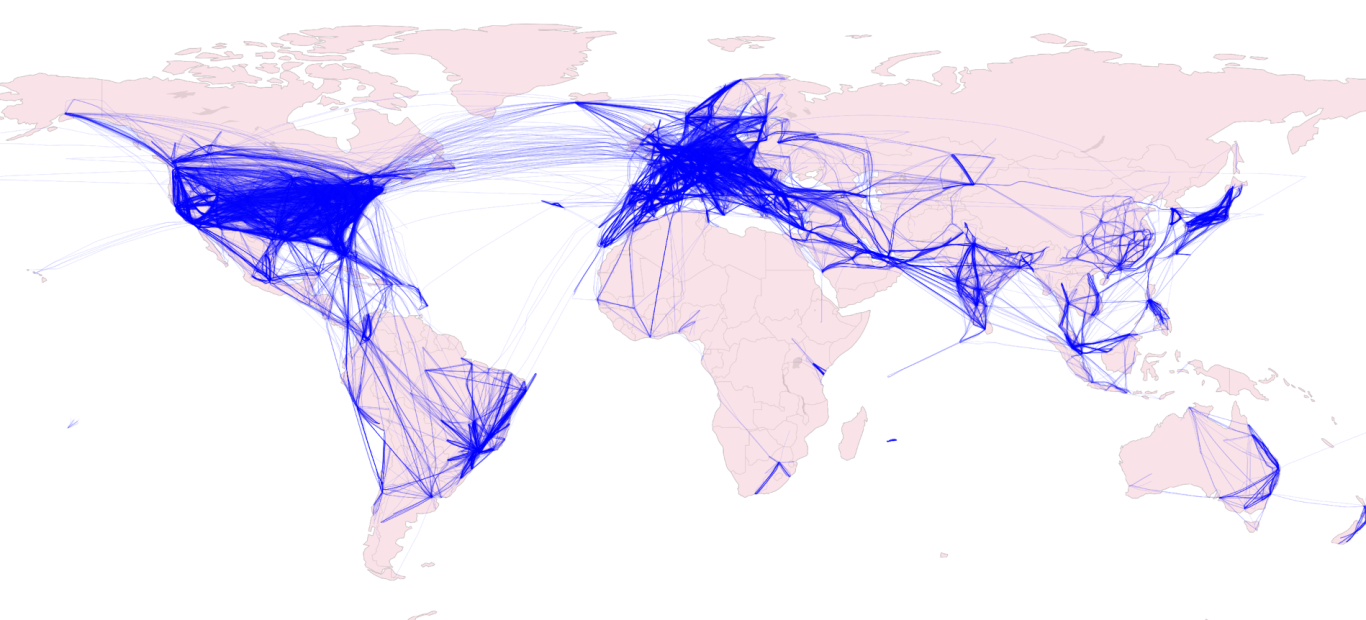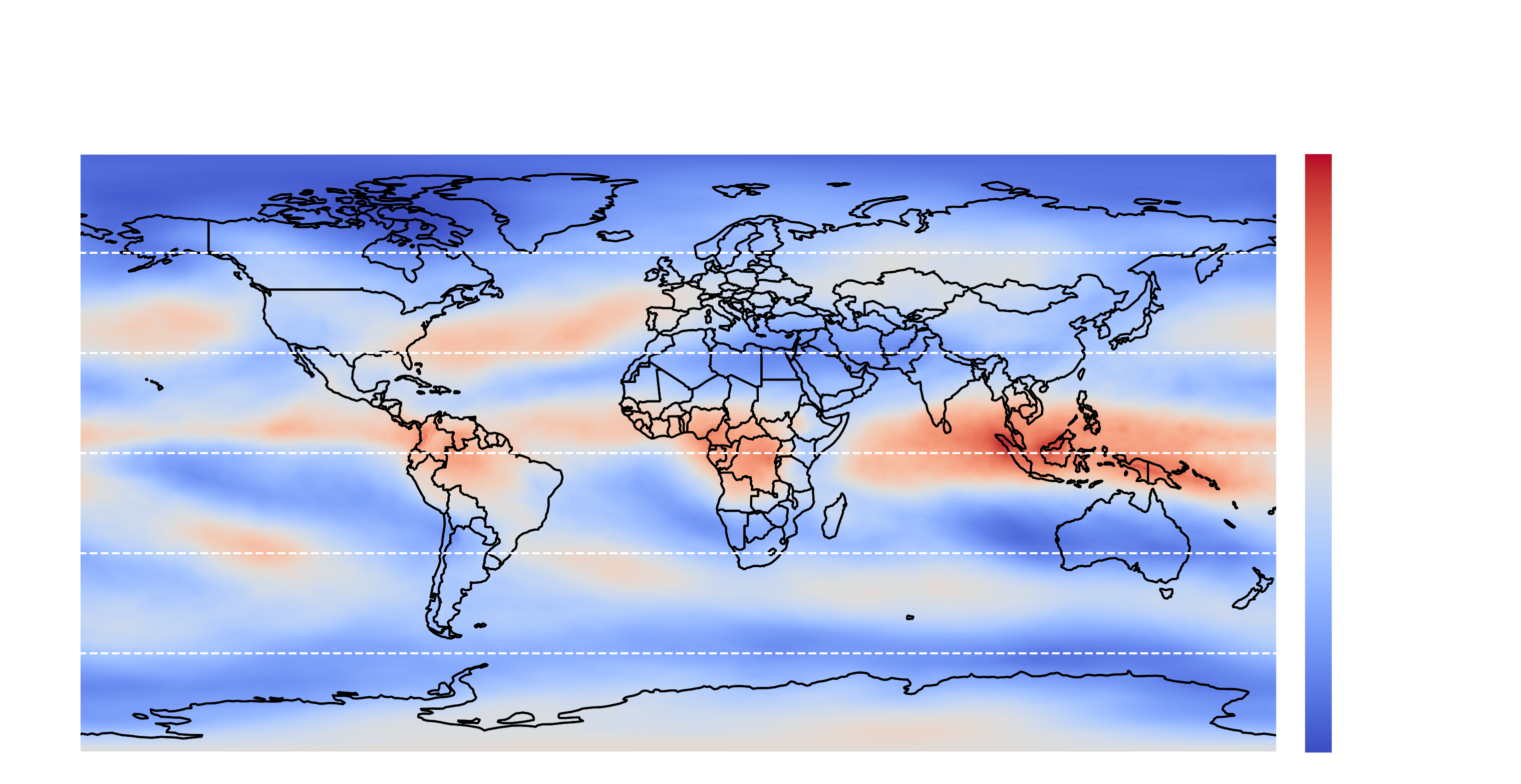Airlines face a mammoth task to achieve their net zero targets and are in urgent need of solutions. The current discourse mostly focuses on reducing in-flight CO2 emissions through Sustainable Aviation Fuels, alongside emerging electric and hydrogen technologies, but these solutions may take decades to scale effectively.
Reducing contrails, which account for a significant proportion of the sector’s total radiative forcing impact, offers a far more immediate upside opportunity. We have recently conducted an analysis of 34,387,868 commercial aviation flights to estimate both the CO2 emissions and additional radiative forcing from contrails.

Contrails: the challenge & the opportunity
Individual flights experience varying degrees of contrail impact according to different operational characteristics, such as:
• Geographic location: Most contrail impact is generated by flights to and from Europe and North America, where larger volumes of commercial air traffic frequently intersect with conducive atmospheric conditions for contrail formation. Other regions with high traffic, such as Asia Pacific, observe lower contrail impact, largely because of less contrail-prone cruise altitudes, as well as weather phenomena such as the Hadley Circulation.

• Flight timing: flights departing in the afternoon tend to contribute to a higher contrail impact, as the contrails formed during this period are the ones that eventually persist into the night and reflect outgoing long wave radiations.
• Aircraft and engine specs: different types of aircraft and engines in use affect flight altitudes and emit varying levels of soot, a key factor in ice nucleation and contrail formation.
• Weather: humidity, temperature, and atmospheric pressure all impact contrail formation, with contrails more likely to form in colder temperatures and higher humidity.
The size of the prize
Adding up CO2 emissions and contrail impact computed on each individual flights, we estimate the following contributions of aviation on climate change:
868 MtCO2
Aviation CO2 emissions
155 MtCO2e
Contrail impact (GWP100)
These figures are highly relevant in the context of the EU’s imminent plans to introduce a new Monitoring, Reporting, and Verification (MRV) scheme for aviation’s non-CO2 environmental effects, including contrails.
Today, opinions differ on whether the monitoring scheme should encompass all flights that depart from or arrive in EU member states, or remain limited to intra-EU flights only, to already align with the scope of the EU Emission Trading Scheme (ETS). In either case, the contrails impact remains large.
53.2 MtCO2e
Contrail impact
EU-ETS Full Scope
18.3 MtCO2e
Contrail impact
EU-ETS Reduced Scope
By isolating the contrail impact of each individual flight, we can now, for the first time, assess the implications of choosing one reporting scope over another. On an airline-by-airline basis, we also observe significant variability in contrail impact depending on the reporting scope, primarily driven by the airline's route network.
Whilst the scheme’s aim is currently to encompass all flights that depart from or arrive in EU member states, some airlines are advocating to reduce its scope to intra-EU flights only, to align with the scope of the EU Emission Trading Scheme (ETS). In either case, the contrails impact remains large.
The Contrail Opportunity Index
Crucially, global contrail impact is very unevenly distributed. In fact, according to our analysis, in 2023 just 2.9% of world flights generated 80% of the total radiative forcing effect of contrails.
This insight represents a huge opportunity: for most airlines, substantial climate savings can be realised with minimal fuel penalties by rerouting only a small number of flights. Estuaire’s analysis makes this clearer at the airline level, where those airlines with the highest concentrations of contrail impact can be ranked accordingly.
Actions to take now
Contrail mitigation offers a realistic means of reducing aviation's impact in the current decade. By adopting advanced contrail mitigation technologies, airlines can make a profound impact on reducing their environmental footprint. Reach to us if you are thinking about deploying the following actions:
• Embedding contrail mitigation in the flight dispatch logic represents the best opportunity for airlines to reduce their environmental footprint in the short term.
• Engaging with contrail and emissions monitoring companies enables airlines to gain full visibility of their unique contrail impact on a flight-by-flight basis
• Adjusting flight schedules, particularly to avoid afternoon departures that lead to contrails persisting into the night, can reduce contrail impact significantly. Given the obvious challenges involved with making such schedule changes, non charter airlines should focus on other ways to actively manage these flights for mitigation.
• Engaging with airports and fuel providers to target Sustainable Aviation Fuel allocation at contrail-prone flights can leverage cleaner combustion exhaust particles to lower contrail lifetimes and impact.

Maxime Meijers
CEO

Nicolas Meijers
CTO
 Request Demo
Request Demo










